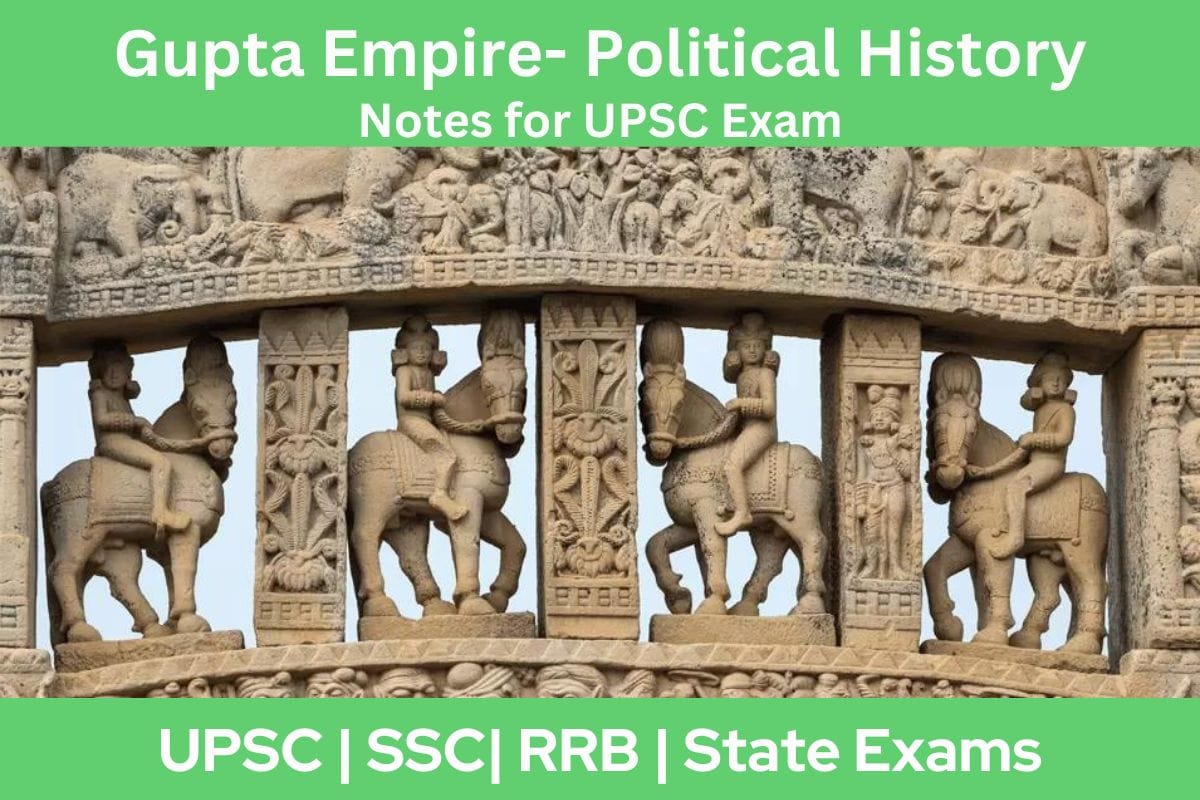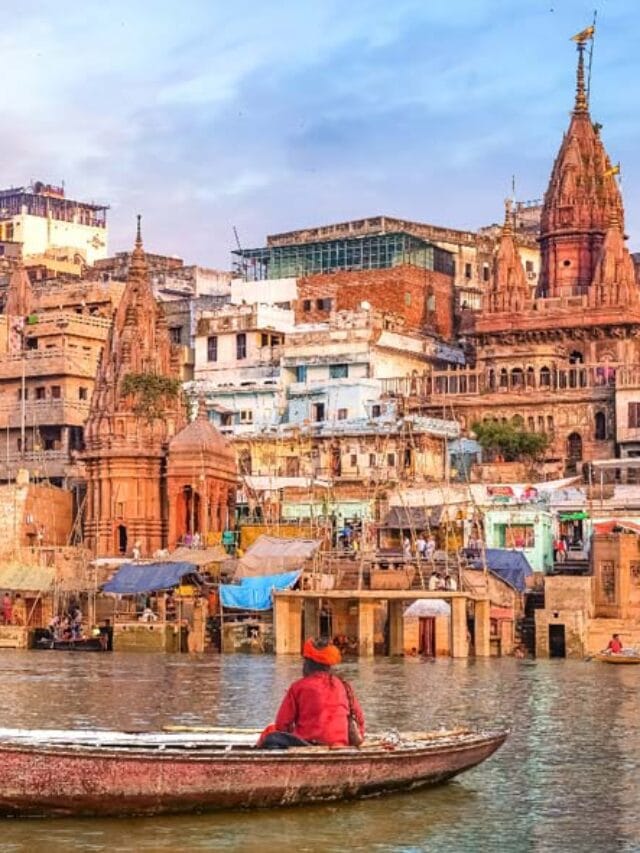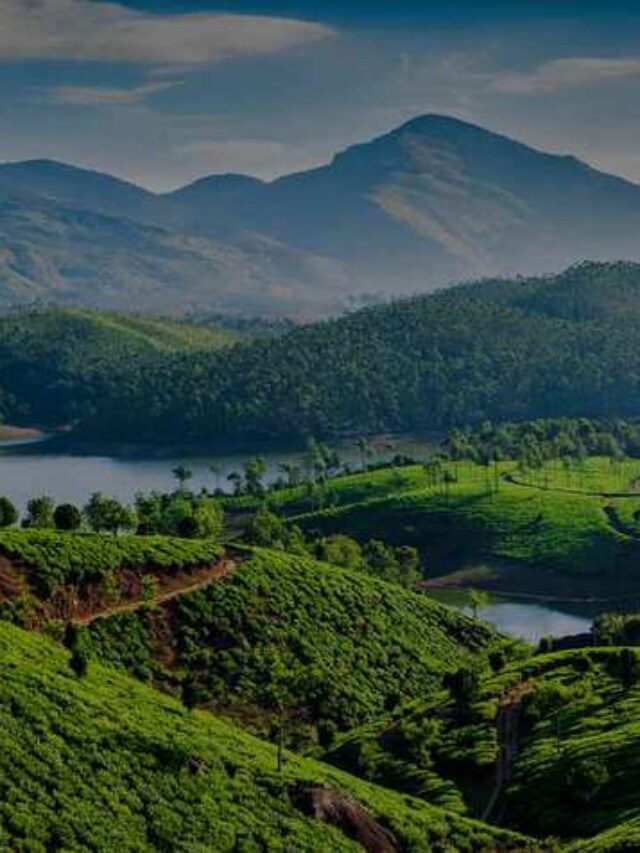
Gupta Empire
- Around the middle of the 3rd century, the power of the Kushanas and the Satvahanas started to decline after ensuring 200 years of stability in politics and the economy.
- Following a short period of confusion, the Guptas appeared in North India, while the Vakatakas emerged in South India.
- The Guptas, likely originating from the Vaishya class, initially came from the Doab region in the Ganga plains. Prayag became a crucial city in the Gupta empire.
- In the beginning, they considered themselves subjects of a larger kingdom, using the title Adiraja.
- However, they gained independence in the early 4th century CE. The founder of the Gupta Dynasty was Sri Gupta.
- Chandragupta I began a strategy of both winning battles and making family connections to make his territories bigger.
- His son and grandson followed this plan, bringing together North India under a powerful empire.
- After Samudragupta’s expansions, it’s commonly believed that his successors later moved the capital to Patliputra from the Ganga doab region.
- In later times, the Gupta rulers faced challenges dealing with the growing power of the Hunas, and the last ruler of the Gupta Empire was Vishnugupta.
Administration of the Gupta Empire:
- The Gupta Empire was split into 26 Bhuktis (Provinces), overseen by princes.
- Their emblem was Garuda. Provinces further divided into Vishaya (Districts), Vithi (Sub-districts), and Grama (villages). Various officers and departments emerged during this era.
Key Officers and Their Roles:
- Kumaramatyas: Appointed by the king to collect revenue in their home province.
- Sandhivigrahika: Minister of peace and war, introduced under Samudragupta.
- Dandapashik: Head of the police department.
- Sarvadhyaksha: Superintendent of all departments.
Administrative Structure:
Administrative posts became hereditary, and influential individuals often shaped local administration due to the feudal setup. The adoption of titles like Adiraja and Maharajadhiraja suggests the Gupta king ruled over many feudatory kings.
Feudalism and Military:
Cavalry was crucial in the Gupta army, and land grants were given to feudal chiefs (Samantas) instead of cash payment. Over time, some Samantas established independent kingdoms.
Law and Justice in the Gupta Empire:
The Gupta period stands out as a significant time for law and justice. They had a clear separation between Civil Law and Criminal Law.
The legal system of this era drew from contemporary legal writings. Notably, the Dharmasastras of Manu, Yajnavalkya, Narada, Brhaspati, and Katyayana were composed during the Gupta period.
Civil law covered rules about marriage, inheritance, and occupations, all influenced by the mentioned texts. Legal authority in the Gupta age was rooted in these scriptures, limiting the absolute power of the monarchy. This differed from the Mauryan era when the Arthashastra granted the king ultimate authority in legal matters.
Weaknesses in Gupta Empire Administration:
- Feudal Arrangement: The Guptas aimed to restore the authority of local chiefs or kings in conquered areas under Gupta rule. However, control over these regional leaders was not very effective, and some Samantas gained considerable power, acting independently.
- Aggressive Expansionism: Trying to strengthen their rule through conquests drained the Gupta Empire’s treasury and goodwill.
- Indirect Revenue Control: Delegating tax powers to feudal lords meant the Gupta rulers lacked direct access to revenue from distant lands. Additionally, the practice of granting tax-free land to Brahmins began during this period.
- Succession Challenges: During succession crises, local chiefs often sought to regain independent authority. In the late 5th century AD, exploiting weak Gupta emperors, many regional powers reasserted their independence.
Decline
Despite North Indian kings defeating the Hunas in 528 CE, the Guptas couldn’t recover. Following the Gupta era, North India fragmented into various kingdoms, including the Maitrakas of Valabhi, Hunas in Punjab, Maukharis of Kannauj, and Yashovarman of Malwa.
MCQs Test on Gupta Empire- Political History








Leave a Reply